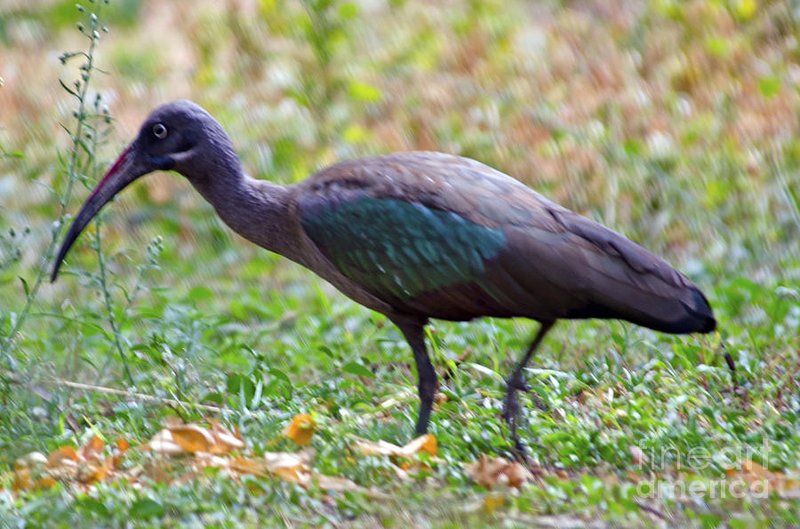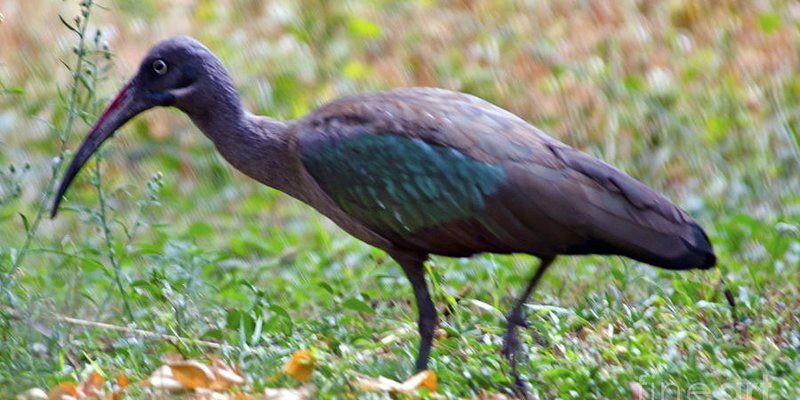
Have you ever marveled at a bird wading through water, its long legs gracefully striding along the shore? If so, you might have seen an ibis. These unique birds, often characterized by their long, curved beaks and striking plumage, play an essential role in their ecosystems. With various species found around the world, the ibis is as diverse as it is interesting. Let’s dive into the fascinating world of ibises, exploring their habitats, behaviors, and importance to nature.
The ibis belongs to the family Threskiornithidae, which includes herons and spoonbills. They’re typically found in wetlands, swamps, and marshes. These birds are known for their social nature; you’ll often find them in flocks, foraging together for food. What makes ibises even more captivating is their adaptability—some species can thrive in urban landscapes, while others prefer remote wilderness areas.
Whether you’re a birdwatching enthusiast or just curious about wildlife, understanding ibises can enrich your appreciation for nature. Their habits and interactions with the environment reveal much about our planet’s health. So, let’s explore the different aspects of these remarkable birds!
Types of Ibis
There are several species of ibis, each with its unique characteristics and adaptations. Some of the most well-known types include the Sacred Ibis, the White Ibis, and the Glossy Ibis. Each species is found in different parts of the world and exhibits fascinating behaviors tailored to their environments.
Sacred Ibis
The Sacred Ibis holds a special place in Egyptian culture, where it was revered and often associated with the god Thoth. With striking white plumage and black feathers on their heads and necks, these birds are truly eye-catching. You can find Sacred Ibises primarily in Africa, frequenting wetlands, savannas, and rice fields.
White Ibis
If you’ve spent time in the southeastern United States, you’ve likely spotted the White Ibis. These charming birds have all-white feathers and distinctive red facial skin and legs. They prefer shallow waters, where they probe for crustaceans, insects, and small fish. Their social behavior is fascinating—they often forage in groups, making their feeding frenzies quite the sight!
Glossy Ibis
The Glossy Ibis is known for its beautiful, iridescent plumage that shimmers with shades of green, bronze, and purple. These birds inhabit marshes and estuaries across North America, Europe, and Asia. They have a wide-ranging diet, feeding on insects, amphibians, and even small reptiles. Their adaptability to various habitats is a testament to their resilience as a species.
Physical Characteristics
Ibis birds have some striking physical traits that make them easily recognizable. Typically, they have long legs that allow them to wade through shallow waters, and their long, curved bills are well-adapted for probing into mud or sand to find food.
| Species | Size (wingspan) | Coloration | Diet | Habitat |
| Sacred Ibis | 100-110 cm | White with black head and neck | Insects, small fish | Wetlands, savannas |
| White Ibis | 80-90 cm | White with red facial skin | Crustaceans, insects | Shallow waters, marshes |
| Glossy Ibis | 70-80 cm | Iridescent bronze and green | Amphibians, insects | Wetlands, estuaries |
Habitat and Distribution
Ibis birds are found in various regions worldwide, from the marshes of North America to the wetlands of Africa and Asia. Their habitat preferences vary depending on the species, but they generally thrive in areas with accessible water sources. Wetlands, swamps, and coastal regions are ideal for the ibis, as these environments provide ample food and nesting grounds.
For instance, the Sacred Ibis is commonly spotted in the shallow waters of the Nile River and surrounding areas, while the White Ibis can be found in the coastal wetlands of Florida and Louisiana. The Glossy Ibis, on the other hand, prefers marshy habitats that offer abundant food sources. Understanding their habitats is crucial for conservation efforts, as these areas are often threatened by human activities.
Behavior and Social Structure
Ibis birds are known for their social behaviors. They’re often seen in flocks, whether foraging for food or roosting at night. This social structure provides several advantages, including safety in numbers and improved foraging efficiency. When they feed, ibises will often work together, using their long bills to stir up mud and disturb prey.
Interestingly, different species of ibis exhibit varying degrees of social behavior. For example, the White Ibis tends to form larger groups than others, often engaging in synchronized feeding displays. This social interaction is essential for their breeding success as well, as they often choose partners within their flocks.
Reproduction and Lifespan
The mating rituals of ibises are just as captivating as their daily behaviors. During the breeding season, males will display their vibrant colors and engage in courtship dances to attract females. Once paired, they will work together to build nests, often in trees or reeds near water sources. The female usually lays 2 to 5 eggs, which both parents help to incubate.
Once hatched, the chicks are altricial, meaning they are dependent on their parents for food and protection. The young ibises grow quickly and are soon ready to leave the nest and join their parents in foraging. In the wild, ibises can live up to 15 years, although their lifespan can be shorter due to threats from habitat destruction and predators.
Conservation Status
Like many wildlife species, ibises face challenges in their survival due to habitat loss, pollution, and climate change. Some species, such as the Ivory-billed Woodpecker, are considered critically endangered, while others, like the Black-faced Ibis, are experiencing population declines. Conservation efforts are crucial to ensure these beautiful birds continue to thrive in their natural environments.
Organizations around the world are working to protect wetlands and restore habitats, recognizing their importance not just to ibises, but to many other species as well. By raising awareness and supporting conservation initiatives, we can all help protect these remarkable birds for future generations.
Ibis birds are fascinating creatures that contribute greatly to their ecosystems. Their unique physical characteristics, social behaviors, and adaptability make them a joy to observe in the wild. By understanding their habits and challenges, we can appreciate the vital role they play in our environment and work to protect their habitats. So, whether you’re a birdwatching enthusiast or just a curious observer, take a moment to watch an ibis in action—you might find yourself captivated by their charm and grace.
FAQ
What do ibises eat?
Ibises have a varied diet that primarily consists of insects, amphibians, and small fish. They often forage in shallow waters and muddy areas, using their long, curved bills to probe for hidden prey. Depending on the species and habitat, their diet may also include crustaceans and other small invertebrates.
Where can you find ibises?
These birds are found across the globe, with different species inhabiting various regions. For example, the Sacred Ibis can be seen in Africa, particularly near riverbanks and wetlands, while the White Ibis is commonly found in the southeastern United States. The Glossy Ibis inhabits marshes and estuaries in America and Europe, showcasing the diverse habitats these birds can occupy.
How do ibises communicate?
Ibises communicate through a combination of vocalizations and body language. They produce a series of croaks and whistles, especially during mating displays or when alarmed. Social interactions in flocks also involve visual cues, such as posturing or movement patterns that signify feeding or potential threats.
Are ibises migratory birds?
Some ibis species are migratory, traveling considerable distances between their breeding and wintering grounds. For instance, the White Ibis migrates seasonally in response to food availability and climatic conditions. However, other species may remain in their habitats year-round, depending on environmental factors and resource availability.
Do ibises mate for life?
Ibis birds typically form monogamous pairs during breeding seasons, although it’s not entirely accurate to say they mate for life. They may reunite with the same partner in subsequent years; however, if a suitable mate isn’t available, they may choose a different partner. Their strong pair bonds during nesting and raising young are fascinating aspects of their social behavior.
What threats do ibises face?
Ibises face several threats, including habitat destruction due to urbanization and agriculture, pollution, and climate change. Wetland loss is one of the most significant challenges they encounter. Additionally, they are vulnerable to predation during nesting, which can impact their population numbers.
How can I help conserve ibises?
You can contribute to ibises’ conservation by supporting local and global organizations focused on protecting wetlands and maintaining healthy ecosystems. Participating in citizen science projects, advocating for environmental protections, and spreading awareness about the importance of these birds can all make a difference. Every small action counts!

